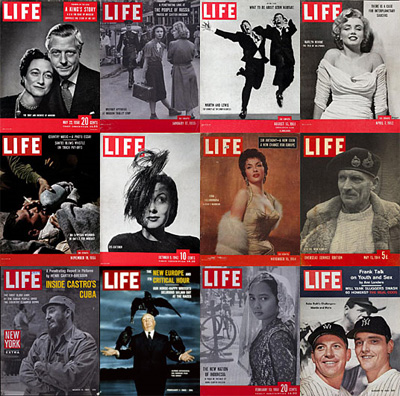 Decades of Life magazine have been scanned and posted online, giving the public the first comprehensive electronic access to the iconic publication’s archives.
Decades of Life magazine have been scanned and posted online, giving the public the first comprehensive electronic access to the iconic publication’s archives.
Life already has made images available through the Life.com Web site and a partnership with Google Inc. The latest effort, also with Google, makes stories available as well, all searchable and viewable for free in their original magazine layout.
“Every day we receive requests from readers looking for these issues for research purposes, and to find photos and articles featuring family members, hometowns and other memories,” Andrew Blau, president of Life Inc., said in a statement. “Now with these full issues available online, readers will be able to browse through history as it was being recorded.”
The online archives are part of Google’s ambitious book-scanning project, which has prompted a copyright-infringement lawsuit by publishers and authors. The parties have settled, though they are renegotiating details after the U.S. Justice Department concluded that the original deal probably violates antitrust law.
The Life archives are not dependent on that settlement because the Time Warner Inc. magazine is agreeing to make its works available through Google.
The archives cover the magazine’s main run as a weekly, from 1936 to 1972 — more than 1,860 issues in all. After the weekly ceased publication in 1972, it was resurrected as a monthly in 1978 and ended again in 2000. From 2004 to 2007, Life appeared as a weekly newspaper supplement.
Editors' Recommendations
- How to change theme colors in Google Slides
- How to delete a file from Google Drive on desktop and mobile
- The best resume templates for Google Docs
- How to do hanging indent on Google Docs
- How to delete Google Chrome on Windows and Mac


